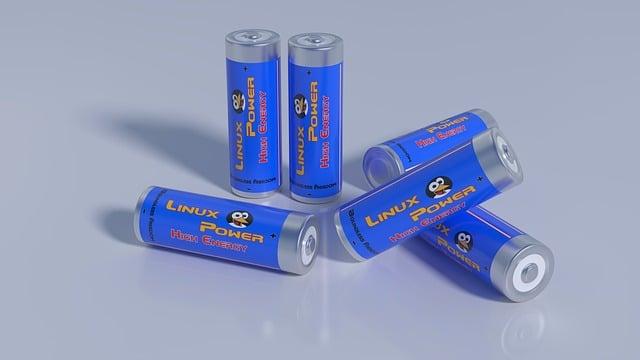In an age where technology seamlessly integrates into our daily lives, teh impact of health wearables on our well-being has become increasingly significant, particularly for seniors seeking to monitor thier health with ease and efficiency. As we step into 2025, the landscape of health wearables is evolving, showcasing advancements not only in functionality but also in battery life—an essential feature for users who require reliability and long-lasting performance.This article delves into the battery life comparison of various senior health wearables, exploring how advancements in energy efficiency and design are reshaping the way seniors manage their health. By highlighting key products on the market, we aim to provide a extensive overview of wich devices power thru daily activities without the constant need for recharging, ensuring that seniors can stay connected and informed in their health journeys. Join us as we navigate the intricate world of technology designed for well-being, revealing insights that could influence your next wearable choice.
Evaluating the Endurance of Senior Health Wearables in 2025
in 2025, senior health wearables have evolved significantly in terms of battery efficiency, providing longer usage times without compromising performance. The advancements in battery technology and the integration of energy-efficient components have led to impressive longevity. Here are some noteworthy features that enhance endurance:
- Solar Charging Capabilities: Some devices utilize solar panels to extend battery life outdoors.
- Sleep monitoring Optimization: By analyzing sleep patterns, wearables can adjust their operational modes to conserve battery energy overnight.
- Low-Power Modes: New wearables can automatically switch to low-power modes when not in active use, preserving energy for when it’s truly needed.
To provide a clearer picture, a comparative analysis of popular senior health wearables in 2025 is presented below:
| Device Model | Battery Life | Charging Method |
|---|---|---|
| HealthMate Pro | 14 days | Wireless Charging |
| Wellness Band 2025 | 10 days | USB-C fast Charging |
| Vitality Tracker | 21 days | Solar & USB Charging |

Understanding the Impact of Features on Battery Performance
In the ever-evolving landscape of senior health wearables, various features have a significant impact on battery performance. Sensor technology, such as heart rate monitors and blood oxygen level detectors, often draws ample power. Consequently, devices equipped with multiple sensors may experience quicker battery depletion. Additionally, screen size and resolution are critical factors; larger displays and higher pixel densities typically require more energy. Features like Bluetooth connectivity and GPS tracking also play pivotal roles in battery consumption. For users, it’s essential to balance the desire for advanced features with the need for prolonged usage without frequent recharging.
To illustrate this, consider the following comparison of selected senior health wearables released in 2025:
| Device Model | Features | Battery Life |
|---|---|---|
| Wearable A |
|
12 hours |
| Wearable B |
|
24 hours |
| Wearable C |
|
18 hours |
As seen in the table, the combination of features directly influences how long these devices can run before requiring a charge. The key takeaway is that prioritizing specific features can extend battery life. For seniors or caregivers, it is crucial to assess which functionalities offer the most benefit while ensuring that devices remain efficient and user-pleasant. Understanding this balance allows users to choose wearables that not only meet their health monitoring needs but also maintain reliable battery performance throughout their daily activities.

Innovative Technologies Shaping Longevity in Wearable devices
The future of senior health wearables is increasingly being dictated by groundbreaking technologies that enhance user experience while significantly extending battery life. advances in energy-efficient sensors and low-power communication technologies are foundational to achieving these goals. These wearables now boast highly sensitive biometrics that require minimal energy, promoting longer operational periods between charges. Furthermore,the integration of solar harvesting materials and kinetic energy recharge systems opens doors to devices that can almost perpetually remain charged while granting users freedom from the burden of frequent battery swaps.
Moreover, the incorporation of AI algorithms in health monitoring systems allows for data transmission only during peak necessity, conserving battery life without compromising the quality of health insights provided. Wearable devices are now infused with smart scheduling features which intelligently manage the device’s power usage based on individual activity levels and environmental conditions. The following table illustrates a snapshot comparison of various senior health wearables in 2025, showcasing their battery life alongside innovative technologies enhancing longevity:
| Device | Battery Life | Key Technology |
|---|---|---|
| HealthWatch Pro | 30 days | Solar recharge & AI optimization |
| AgeSmart Band | 21 days | Low-power sensors & kinetic recharge |
| CareMonitor 360 | 25 days | Biometric data sampling & smart scheduling |
| FitForLife Tracker | 18 days | Energy-efficient communication |

Choosing the Right Wearable for Optimal Battery Life
When selecting a wearable device, battery life should be a top consideration, especially for seniors who rely on continuous monitoring.A longer-lasting battery ensures that the device can track vital health metrics without frequent interruptions for recharging. Several factors contribute to the effectiveness of a wearable’s battery life:
- Display Type: OLED screens tend to consume less power compared to LCDs.
- Sensor Technology: Advanced sensors with energy-saving modes can provide comprehensive health data while minimizing energy use.
- Software Optimization: Devices with well-optimized software generally manage power consumption better, extending battery performance.
Finding a balance between features and battery longevity is crucial. For example, devices that offer high functionality such as heart rate monitoring and GPS tracking may drain the battery faster. On the other hand, wearables with simplified features can last significantly longer. Here’s a brief comparison of popular senior-focused wearables in 2025, showcasing their battery life performance:
| Wearable Model | Battery Life | Key Features |
|---|---|---|
| HealthTracker Pro | 10 days | Heart Rate, Sleep Tracking |
| SeniorFit lite | 14 days | Step Counter, Calorie Monitoring |
| MedTrack Smart | 7 days | Medication Reminders, SOS Alert |
To Wrap It Up
the landscape of senior health wearables in 2025 highlights not only the remarkable advancements in technology but also the crucial role battery life plays in ensuring user satisfaction and reliability. As we’ve explored, the interplay between longevity and functionality has become a defining characteristic of these devices, directly influencing the quality of care and independence for seniors. With exciting innovations on the horizon, it’s evident that manufacturers are prioritizing sustained performance alongside user-centric designs. Whether it’s a smartwatch that tracks heart rates, or a discreet sensor monitoring daily activity, enhanced battery life will remain at the forefront of development, empowering older adults to live healthier and more connected lives. As we look ahead, the evolution of these wearables will undoubtedly continue to shape the way we approach senior health management, ensuring that staying connected doesn’t come at the expense of convenience. As we take our leave from this exploration, may the insights gleaned guide future choices and spark conversations around improving the everyday experiences of our seniors.





